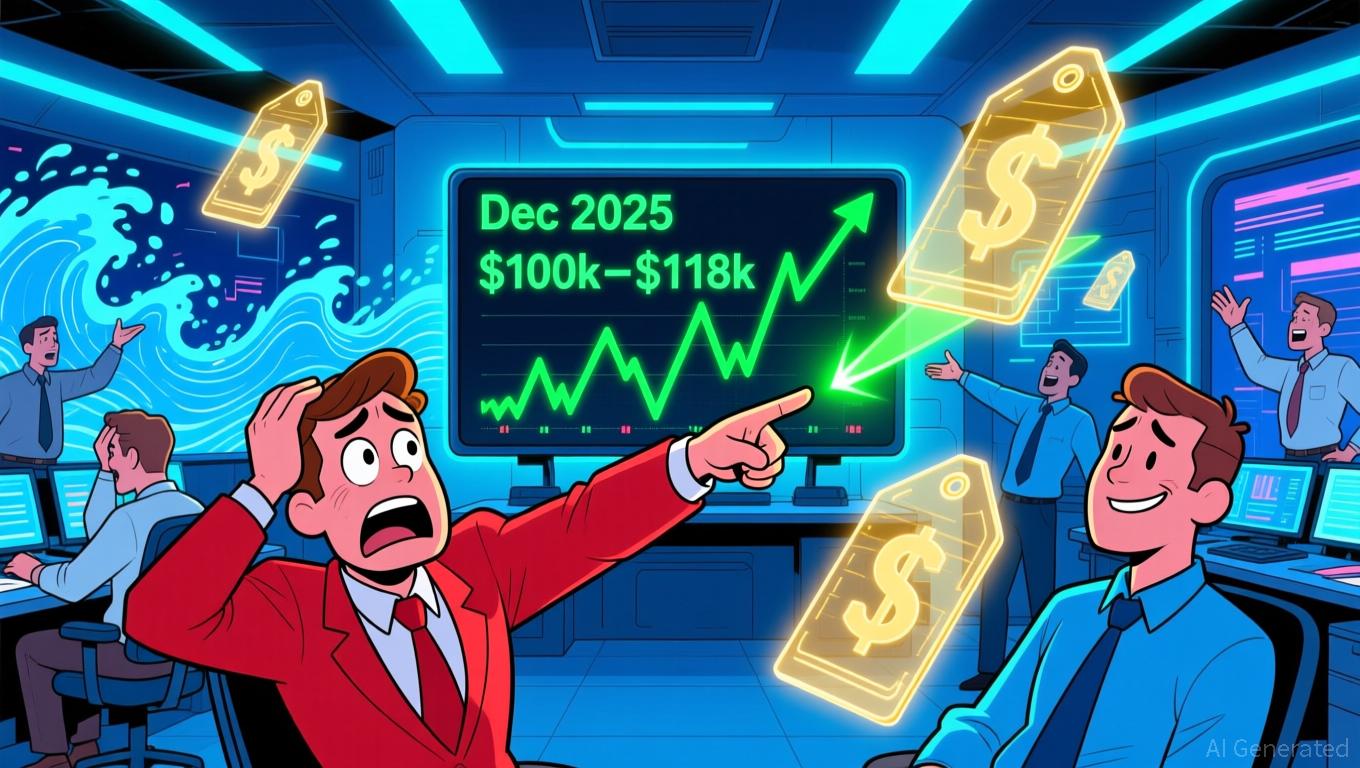Fed's Potential December Rate Reduction Depends on Inflation and Labor Market Dynamics
- The Fed enters a blackout period before its December meeting, with markets expecting a rate cut despite internal divisions over inflation and labor market signals. - Meeting minutes revealed a "strong split" among policymakers, with some favoring easing due to cooling labor markets and modest policy tightness, while others caution against premature action. - New York Fed President John Williams' remarks on "room for further adjustment" boosted market bets for a December cut, though Morgan Stanley revised
The Federal Reserve is about to begin its pre-meeting blackout period ahead of the December policy session, as traders and analysts continue to anticipate a rate reduction despite internal disagreements and mixed economic indicators. Recent events—including updated projections from leading financial firms and significant statements from Fed officials—have strengthened the view that the central bank will lower interest rates before the year concludes.
The minutes from the Fed’s October meeting,

Morgan Stanley, which recently changed its position on a December rate reduction,
The most significant boost to market optimism came from New York Fed President John Williams, who last week signaled a willingness to consider further rate decreases. “I see monetary policy as somewhat restrictive... So I believe there’s still potential for another adjustment soon,” Williams remarked,
The Fed’s top leadership—including Chair Jerome Powell and Vice Chair Philip Jefferson—has yet to provide a clear signal about December, fueling speculation about possible dissenting votes. Some regional Fed presidents, such as Susan Collins of Boston and Lorie Logan of Dallas, have argued for keeping rates steady until inflation more clearly approaches the 2% goal,
This ongoing debate highlights broader economic challenges. Although inflation remains above the target—September’s CPI was 3% and PCE stood at 2.8%—Fed officials have noted that price pressures could ease as the effects of tariffs diminish,
As the December meeting draws near, investors will be watching closely for signals in the Fed’s statement and press conference. A rate cut would be consistent with the central bank’s history of responding to changing data, but any surprise could spark market volatility. For now, the combination of strong institutional forecasts, influential official remarks, and continued economic strength has made December a pivotal moment for Fed policy.
Disclaimer: The content of this article solely reflects the author's opinion and does not represent the platform in any capacity. This article is not intended to serve as a reference for making investment decisions.
You may also like
USDe's total value locked drops by 50% even as onchain activity remains strong, highlighting the vulnerability of DeFi yields
- Ethena's USDe stablecoin TVL fell 50% to $7.6B amid yield compression and unwinding leveraged carry trades, despite rising onchain transaction volume. - The synthetic stablecoin's 5.1% APY now lags Aave's 5.4% USDC borrowing rates, triggering outflows as leverage strategies become unprofitable. - Collapsing 10x leverage loops and maturing perpetual tokens accelerated TVL decline, exposing fragility of yield-bearing stablecoins in risk-off markets. - Chaos Labs recommends lowering Aave V3 stablecoin borro
Klarna's CEO Turns Crypto Skepticism into a Stablecoin Innovation
- Klarna , a Swedish fintech , launches KlarnaUSD, its first stablecoin, after CEO Sebastian Siemiatkowski previously dismissed crypto as impractical. - Pegged to the U.S. dollar, the stablecoin uses Stripe's Open Issuance platform and Tempo blockchain, with a 2026 public launch planned. - Aimed at cutting $120 billion in annual cross-border payment fees, it targets 114 million users and $112 billion in GMV, aligning with a $27 trillion stablecoin market surge. - The move deepens Klarna's partnership with

Bitcoin News Today: Bitcoin’s $13.3B Options Expiration Depends on 15% Surge to Protect Major Positions
- Bitcoin (BTC-USD) fell 30% from its $126,000 peak to $87,080 amid ETF outflows, stablecoin liquidity declines, and leverage unwinds. - A $13.3B options expiry on Dec 26, 2025, features a $1.74B call condor bet targeting $100,000–$118,000, with profits capped at $112,000. - November saw $3.5B in Bitcoin ETF outflows, while stablecoin market cap dropped $4.6B, signaling heightened liquidity risks. - Market stability signs include a 32 RSI near oversold levels and reduced downside protection costs, though s

Bitcoin Updates Today: Bitcoin's Volatility: Surrender or Endurance from Institutions?
- Bitcoin's recent price drop and negative funding rates suggest market capitulation, with open interest collapsing 32% since late October 2025. - Institutional holdings like KindlyMD's $681M BTC stash and Harvard's ETF investments highlight growing long-term confidence in Bitcoin's stability. - Q3 2025 crypto VC surged 290% to $4.65B, while experts diverge: Standard Chartered targets $200K BTC by year-end, Kraken predicts $80K–$100K consolidation. - Macro risks including Japan's reserve rules and AI-drive
